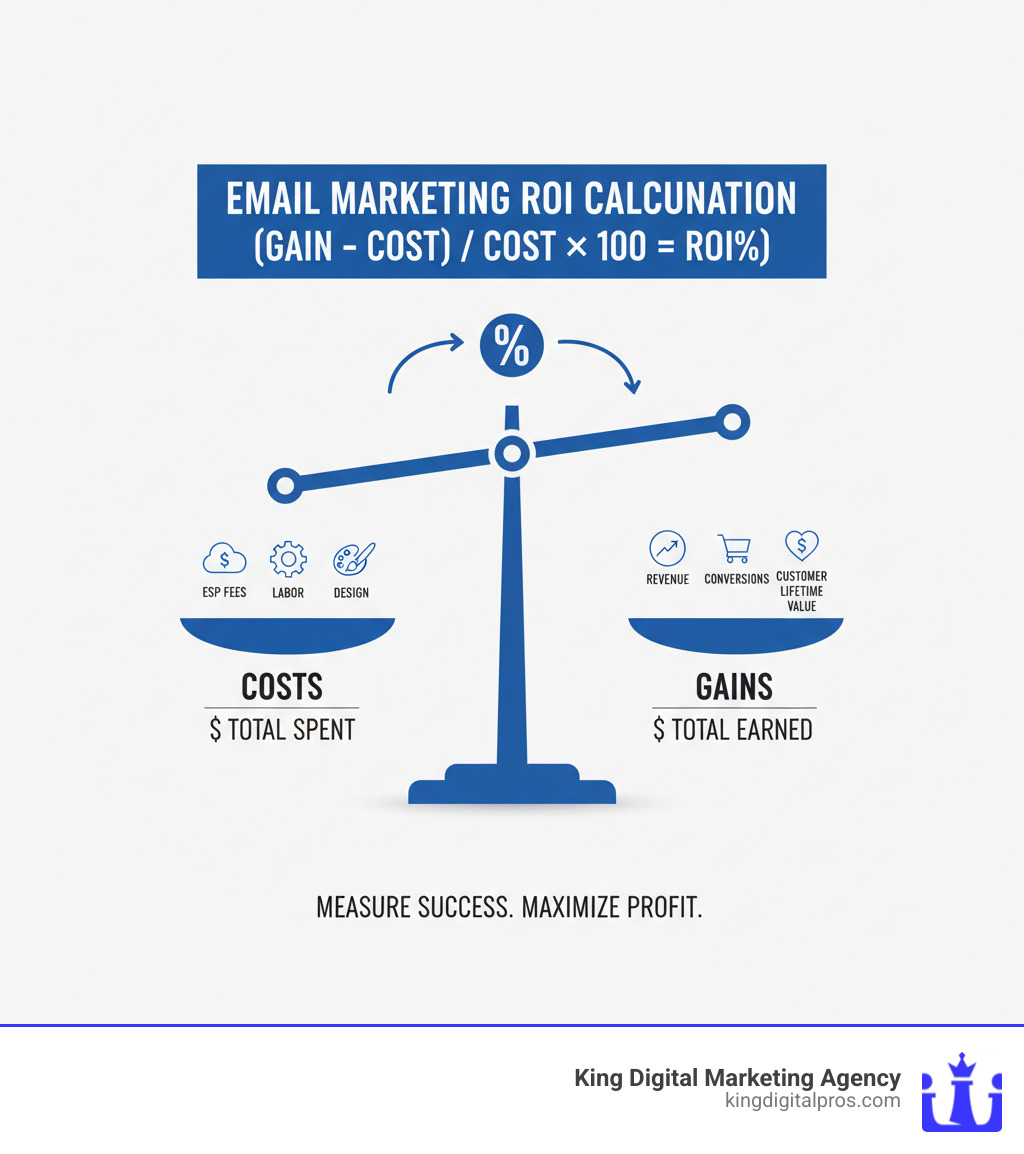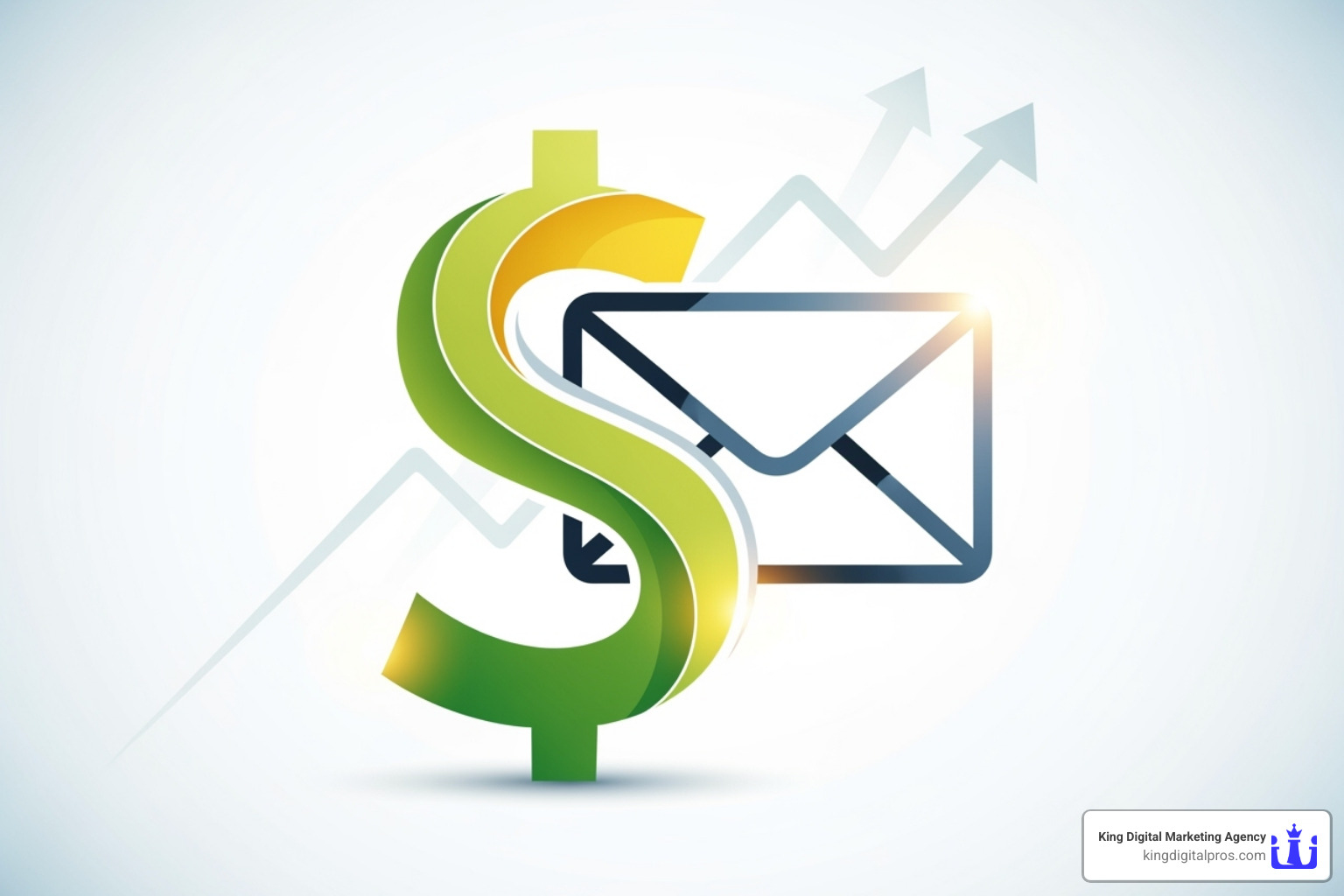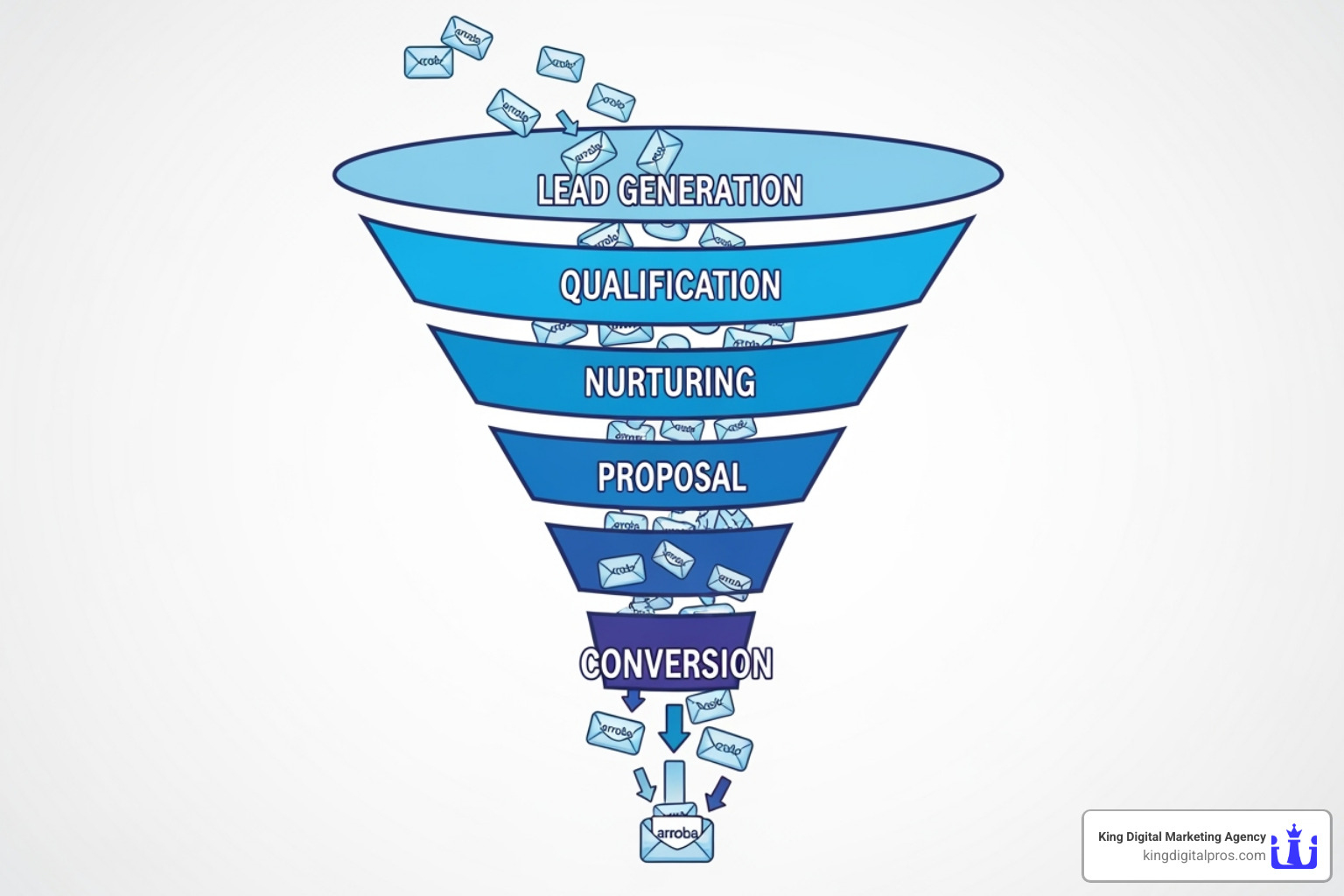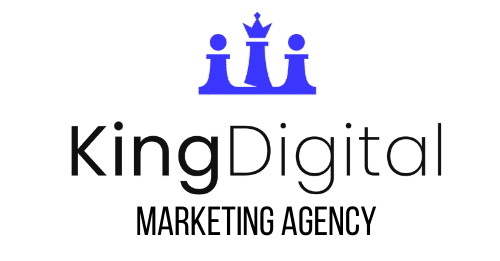Why Email Marketing ROI Matters More Than Ever
How to calculate ROI for email marketing is straightforward: subtract your total costs from the revenue generated, divide by the costs, and multiply by 100. The basic formula is: (Gain – Cost) / Cost x 100 = ROI%.
Quick Calculation Example:
- Revenue from email campaign: $10,000
- Total campaign costs: $2,000
- ROI Calculation: ($10,000 – $2,000) / $2,000 x 100 = 400% ROI
This means for every $1 you spent, you earned $4 in profit.
Email marketing isn’t just another channel-it’s a revenue powerhouse. While many businesses struggle to see clear returns from digital marketing, email consistently delivers an average return of $36 to $42 for every dollar spent. That’s a 3,600% to 4,200% ROI, far outpacing other digital channels.
However, many businesses don’t calculate their email marketing ROI, leaving them unable to justify spending or optimize campaigns. Without this data, you’re flying blind.
The good news? Calculating email ROI is simple. Once you understand the formula and which numbers to track, you can make data-driven decisions that transform email from a cost center into a predictable profit generator.
As Bernadette King, I’ve spent years helping businesses build marketing systems that deliver measurable results. Learning how to calculate ROI for email marketing is the first step for any business owner who wants to become a confident strategist, knowing exactly where their dollars go and what they return.

Understanding Email Marketing ROI: The What and Why
Email marketing ROI is a simple measure of profitability: for every dollar you spend on email, how much revenue do you get back? It’s a concrete number that tells you if your investment is paying off, and it should be a primary metric for evaluating any marketing channel.
Without measuring ROI, you’re essentially guessing about your email strategy’s effectiveness. At King Digital Marketing Agency, we’ve seen businesses transform their approach once they start tracking ROI. They move from simply “sending newsletters” to running strategic campaigns with clear financial goals, knowing exactly which emails drive revenue.
The future of email is bright. According to Statista, email marketing revenue is projected to surge by 286.6% between 2024 and 2032, from $9.7 billion to $37.5 billion. This massive growth underscores that businesses worldwide are doubling down on email because it works. For more on turning visitors into customers, see our guide on the digital marketing conversion rate.
Why Measuring ROI is Crucial for Your Business
Tracking your email ROI is non-negotiable. First, it justifies your marketing spend with hard numbers. When asked why you’re spending money on email, you can answer, “Because it generated $2,000 in revenue last month.” This data-driven approach also helps you identify profitable strategies to scale while cutting back on underperforming ones. With baseline numbers, you can test and optimize campaigns for better results. Finally, strong ROI data makes it easy to secure budgets and demonstrate value to stakeholders, proving that marketing is a powerful investment, not just an expense.
The Power of Email: Unpacking the High ROI
Why does email consistently outperform other marketing channels? It comes down to a few key advantages.

First, distribution costs are incredibly low. Unlike paid ads where every click costs money, sending an email to 10,000 people costs the same as sending to 100. Second, email is a direct communication channel to an audience that has invited you into their inbox, fostering trust. Third, this warm audience has high conversion potential; automated emails, for instance, account for 37% of email-generated sales despite being only 2% of sends. Finally, you have audience ownership. Your email list is an asset you control, immune to algorithm changes on social media or search engines.
Research from Oberlo confirms that email consistently ranks as one of the highest-ROI channels, delivering $36 to $42 for every $1 spent. This financial efficiency is why understanding how to calculate its ROI is so critical.
How to Calculate ROI for Email Marketing: The Core Formula
Calculating email marketing ROI uses a refreshingly straightforward formula. You don’t need a finance degree, just a clear understanding of your costs and revenue.
Email Marketing ROI = (Gain from Email Marketing – Cost of Email Marketing) / Cost of Email Marketing x 100
- Gain: The total revenue generated directly from your email campaigns.
- Cost: All expenses incurred to create and send those campaigns.
The result is a percentage that shows your profit for every dollar invested. For example, if a campaign generated $5,000 in revenue on a $1,000 investment, your ROI is 400% (($5,000 – $1,000) / $1,000 x 100). This means you earned $4 in profit for every $1 spent. For assistance, our marketing ROI calculator can do the math for you.
Step 1: Identifying Your “Costs” (The Investment)
An accurate ROI calculation requires accounting for all related expenses, not just your email platform’s bill. Be thorough and honest about your total investment.
- Email Service Provider (ESP) Fees: Your monthly or annual subscription to platforms like Mailchimp or HubSpot.
- Labor Costs: The time your team spends on strategy, copywriting, design, setup, and analysis. Calculate this by multiplying hours spent by the hourly rate.
- Content and Design Assets: Costs for stock photos, design software like Canva, or freelance writers and designers.
- List Acquisition Costs: Ad spend or promotional costs dedicated to growing your email subscriber list.
- Agency or Freelancer Fees: Direct costs if you outsource any part of your email marketing.
- Software Integrations: Any fees to connect your ESP with your CRM, e-commerce platform, or other tools.
Step 2: Measuring Your “Gain” (The Return)
Measuring the revenue your emails generate is the other half of the equation. This is best achieved through proper tracking.

Revenue attribution is key-linking sales directly to specific email campaigns. Use tracking URLs with UTM parameters in your emails, which allows tools like Google Analytics to show you which emails led to purchases. Most ESPs also offer built-in analytics that track revenue, especially when integrated with your e-commerce platform.
For lead generation businesses, you’ll need to calculate lead value. If an email generates leads instead of direct sales, assign a dollar value to each lead. For example, if 10% of leads become customers and the average customer value is $500, each lead is worth $50. For a more advanced view, consider Customer Lifetime Value (CLV), which measures the total revenue a customer generates over their entire relationship with your business. Our lead value calculator can help you determine these numbers.
A Step-by-Step Guide on How to Calculate ROI for Email Marketing
Let’s apply the formula to two common business scenarios.
Example 1: B2C E-commerce
A local bakery runs a Valentine’s Day email campaign.
- Costs:
- ESP Fee (prorated): $12.50
- Labor (3 hrs @ $30/hr): $90
- Freelance Design: $75
- Total Cost: $177.50
- Gain:
- The email generated 150 sales with an average order value of $45.
- Total Gain: 150 x $45 = $6,750
- ROI Calculation:
- ($6,750 – $177.50) / $177.50 x 100 = 3,703% ROI
Example 2: B2B Lead Generation
A consulting firm promotes a webinar via email.
- Costs:
- ESP Fee: $150
- Labor (Marketing & Design): $650
- Ad Spend (List Growth): $300
- Total Cost: $1,100
- Gain:
- The campaign generated 80 webinar sign-ups.
- With a 5% lead-to-client conversion rate and an average client value of $2,500, the estimated gain is calculated.
- Estimated Gain: 80 leads x 5% x $2,500 = $10,000
- ROI Calculation:
- ($10,000 – $1,100) / $1,100 x 100 = 809% ROI
These examples show that the formula works for any business model. The key is accurate tracking of both costs and gains.
Benchmarks and Key Influencers of Email ROI
Knowing your own ROI is the first step. Comparing it to industry benchmarks helps you set realistic goals and identify improvement opportunities. For ongoing performance monitoring, our lead tracking services can provide valuable insights.
Average vs. Good Email Marketing ROI Benchmarks
Email marketing’s ROI doesn’t just beat other channels-it dominates them. Here’s how it stacks up:
| Channel | Average ROI (per $1 spent) | ROI Percentage |
|---|---|---|
| Email Marketing | $36 – $42 | 3,600% – 4,200% |
| SEO (Organic Search) | ~$22 | ~2,200% |
| Paid Search (Keyword Ads) | ~$17 | ~1,700% |
| Social Media Advertising | ~$10 – $11 | ~1,000% – 1,100% |
| Display/Banner Ads | ~$2 | ~200% |
The average ROI for email marketing is a staggering 3,600% to 4,200%. While a 5:1 ratio (500%) is considered solid in general marketing, email’s potential is much higher. The median ROI for email is 122%, four times higher than any other digital channel.
Top performers-the top 18% of companies-achieve returns above $70 per $1 invested (7,000%+ ROI). If you can consistently hit a 10:1 ratio, you’re performing exceptionally well.
Inbound vs. Outbound Email: A Quick ROI Comparison
Understanding the difference between inbound and outbound email helps you allocate resources effectively.
- Inbound email targets people who have already opted in (subscribers, customers). These are warm leads who want to hear from you.
- Outbound email is cold outreach to prospects who haven’t engaged with your brand.
Inbound marketing consistently delivers a higher ROI. Inbound leads cost 62% less than outbound leads, and their conversion rates are significantly higher (e.g., 14% vs. 2%). However, outbound email has its place for filling your pipeline with new prospects, generating long-term value despite a lower immediate ROI.
Key Factors That Influence Your Email Marketing ROI
What separates high-ROI campaigns from the rest? It comes down to optimizing several critical factors:
- List Quality: A clean list of engaged subscribers is more valuable than a large, uninterested one.
- Segmentation & Personalization: Tailoring messages to specific audience segments based on behavior or demographics dramatically boosts relevance and conversions.
- Email Design: A clean, mobile-responsive design improves user experience and reflects well on your brand.
- Call-to-Action (CTA): A single, clear, and compelling CTA guides subscribers toward the desired action, eliminating confusion.
- Send Time & Frequency: Sending emails when your audience is most active, and at a consistent frequency, impacts open and click rates.
- Deliverability: If your emails land in spam, your ROI is zero. Proper authentication (SPF, DKIM) and list hygiene are crucial for reaching the inbox.
- Mobile Optimization: With most emails opened on mobile, a responsive design is essential for capturing conversions.
Actionable Strategies to Boost Your Email Marketing ROI
Calculating your ROI is just the start. The real value comes from using that data to implement strategies for continuous improvement. This creates a powerful feedback loop: measure, analyze, optimize, and repeat. For more on improving campaign performance, see our conversion optimization guide.

Master Your List with Segmentation and Hygiene
Your email list is your most valuable marketing asset. To maximize its ROI, focus on quality over quantity.
- Audience Segmentation: Divide subscribers into groups based on demographics, purchase history, or engagement level. Tailoring content to these segments makes your emails more relevant and effective.
- Personalization: Use segmentation data to personalize content and product recommendations. This shows subscribers you understand their needs.
- List Hygiene: Regularly remove inactive subscribers and bounced email addresses. A clean list improves deliverability and provides more accurate engagement metrics, boosting your effective ROI.
- Double Opt-in: Require new subscribers to confirm their email address. This builds a high-quality list of genuinely interested individuals from the start.
For more on this topic, explore our online sales lead management ultimate guide.
Double Your Returns with A/B Testing
A/B testing is a powerful method for data-driven optimization. By testing one variable at a time-such as the subject line, call-to-action, or send time-you can identify what resonates best with your audience and incrementally improve performance. Key elements to test include:
- Subject Lines & Preheaders
- Email Copy & Messaging
- Calls-to-Action (CTA) Button Color, Text, and Placement
- Send Times and Days
- Images and Visuals
- Email Layout and Design
This isn’t just a minor tweak; studies show that A/B tested email campaigns generate double the ROI compared to untested ones. If you’re not testing, you’re leaving money on the table.
Leverage Automation for Higher Engagement
Email automation sends timely, personalized messages triggered by subscriber actions. These sequences, or “drips,” often have the highest ROI because they engage users at moments of peak interest.
- Welcome Series: Introduce your brand to new subscribers and guide them toward a first purchase.
- Abandoned Cart Emails: Remind customers about items left in their cart to recover potentially lost sales. These are a huge source of revenue.
- Post-Purchase Follow-ups: Thank customers, ask for reviews, and suggest related products to build loyalty.
- Re-engagement Campaigns: Win back inactive subscribers with a targeted series of emails.
Automated emails are an ROI powerhouse. They account for a disproportionately high percentage of email-generated sales, working 24/7 to nurture leads and drive revenue in the background.
Frequently Asked Questions about Email Marketing ROI
Here are concise answers to the most common questions we hear from businesses about email marketing ROI.
What is considered a good ROI for email marketing?
While a 5:1 ratio (500%) is considered good in general marketing, the bar for email is much higher. The industry average is between $36 and $42 for every $1 spent (a 3,600% to 4,200% ROI). If you’re hitting that range, you’re doing well. Top performers can even exceed a 70:1 ratio.
How does email marketing ROI compare to other digital channels?
Email marketing consistently delivers the highest ROI. Its average return of ~$40 per $1 spent significantly outperforms other channels like SEO (~$22), paid search ads (~$17), and social media advertising (~$11). This cost-efficiency makes it one of the best investments in a digital marketing strategy.
What are the most important metrics to track besides direct revenue?
While revenue is the goal, several leading indicators help you diagnose and improve campaign health. Tracking these metrics is essential for optimizing your ROI.
- Open Rate: Shows the effectiveness of your subject line.
- Click-Through Rate (CTR): Measures how compelling your email content and CTA are.
- Conversion Rate: The percentage of recipients who complete the desired action (e.g., purchase, sign-up).
- Unsubscribe Rate: An indicator of list health and content relevance.
- Bounce Rate: Tracks undeliverable emails, affecting your sender reputation.
- List Growth Rate: Shows if you are consistently attracting new potential customers.
Monitoring these metrics helps you make informed decisions to boost your bottom line. Our lead tracking services can provide the detailed analysis needed to continuously improve.
Conclusion
You now have the roadmap for how to calculate ROI for email marketing. This simple calculation transforms email from an unpredictable expense into a consistent profit generator, allowing you to see exactly what your marketing dollars bring back.
But calculation is just the starting line. The real growth comes from using these insights to optimize your strategy. This means cleaning your list, segmenting your audience, A/B testing your campaigns, and leveraging automation. Optimization isn’t a one-time fix; it’s an ongoing commitment to improvement.
At King Digital Marketing Agency, we focus on delivering measurable results that translate into real growth. When you stop guessing and start measuring, you’re not just sending emails-you’re building a predictable system that brings customers through your door.
Ready to see where you stand? Our Tools & Marketing ROI Calculator makes it easy to crunch the numbers and open up your email marketing’s full potential.

